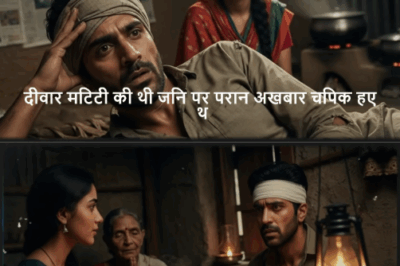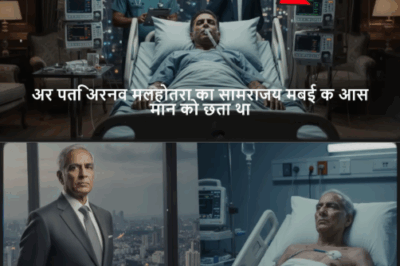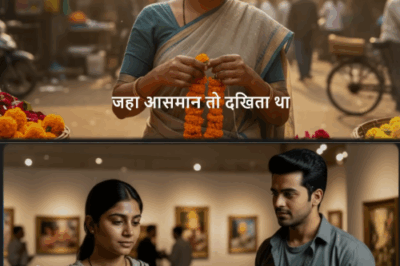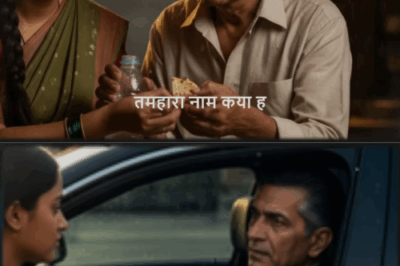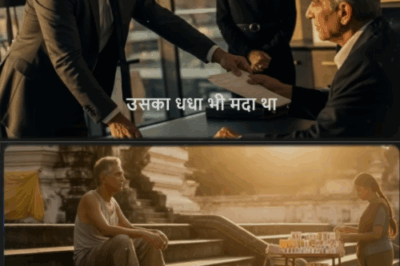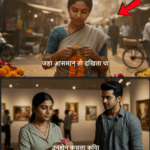Bus अग्निकांड के शिकार अपनों के पार्थिव देह का परिजनों को इंतजार, DNA से हो रही पहचान, देखें दर्द
.
.
Grief and Waiting: Families Await Remains of Jaisalmer Bus Fire Victims as DNA Identification Begins
JODHPUR, INDIA — Families of the victims of the devastating Jaisalmer bus fire are enduring an agonizing wait for the remains of their loved ones, days after the tragic accident. With 21 lives confirmed lost and many bodies burned beyond recognition, the identification process has stalled, forcing authorities to rely on DNA testing. This delay, coupled with what relatives are calling insufficient financial compensation, has ignited anger and grief among the affected families gathered outside the Mahatma Gandhi (MG) Hospital mortuary in Jodhpur.
The accident, which occurred when a private bus traveling from Jaisalmer to Jodhpur caught fire due to a short circuit, has claimed the lives of several poor laborers and entire families, leaving behind small children with no providers.
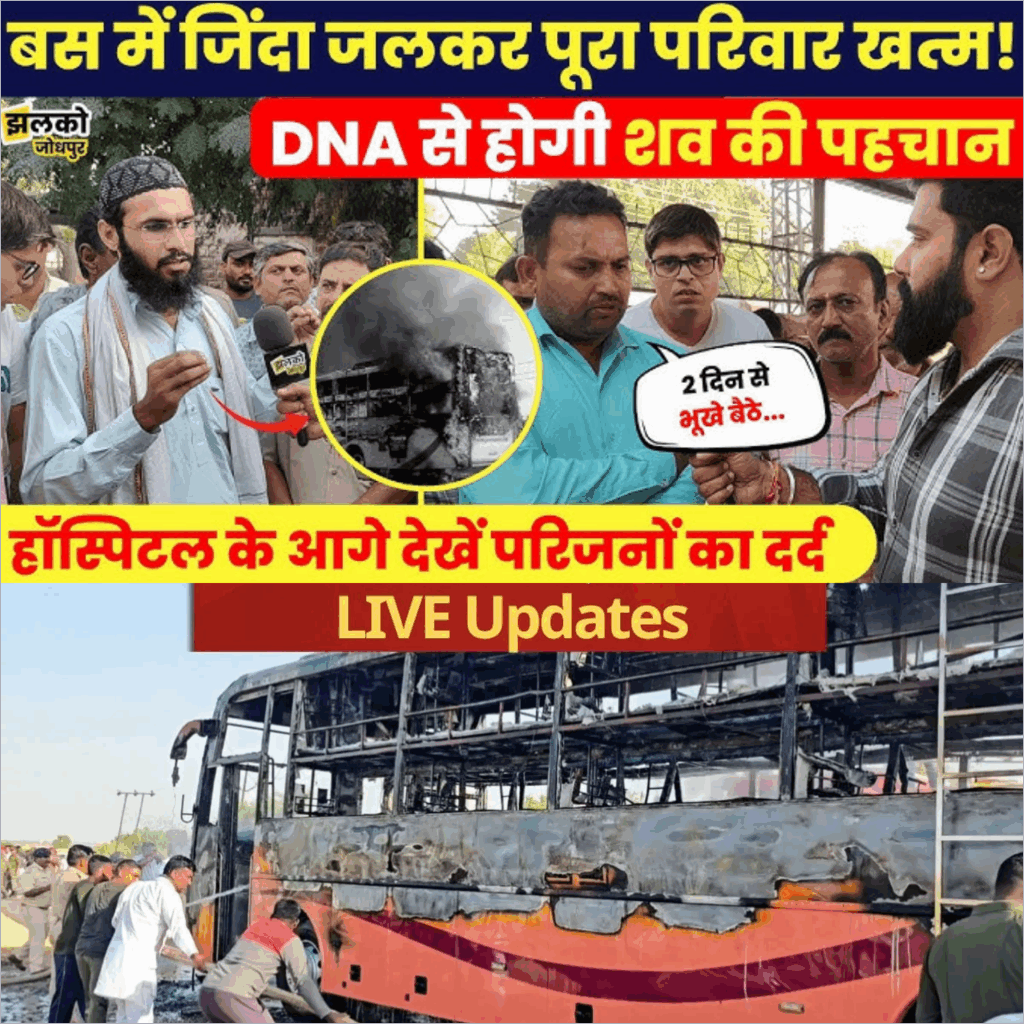
The Agonizing Wait and Administrative Delays
Family members have been waiting outside the mortuary for over 24 hours, often without food, desperately seeking updates on the repatriation of the bodies.
Reliance on DNA: Due to the severity of the burns, identifying the deceased is impossible without scientific confirmation. Samples were taken from relatives in Jaisalmer and transported for processing, but the results are still pending.
Lack of Communication: Relatives expressed deep frustration over the lack of clear communication from the administration. One family member stated they were told conflicting times—from “this afternoon” to “tonight at 8:00 PM”—for the release of the bodies.
Emotional Toll: The delay is causing immense emotional distress. Families have concealed the full truth from elderly relatives, telling them the victims are merely undergoing “treatment.” One man described his mother’s devastating state, still believing her son is only having an operation.
The Family of Mahendra: One family, Mahendra, his wife, two daughters, and one son—a total of five family members—were traveling together for Diwali holidays. All five members perished in the accident, leaving only Mahendra’s mother and a brother working in Europe.
The Toll of the Tragedy
The fire has wiped out multiple families and key providers, disproportionately affecting the poor and labor classes.
Confirmed Casualties: The initial count of 17 burn victims brought to the hospital quickly escalated, with the official death toll now standing at 21 people (17 bodies were taken to Jodhpur, with an additional four succumbing to injuries after transfer).
The Completely Perished: Many of those killed were poor laborers and farmers. The victims included Rajendra Singh Chauhan (a journalist who tragically boarded the bus last minute), and an entire family from the sleeper section that was fully consumed by the fire.
The Young and Sole Provider: One victim, an unnamed young man, was only 24 years old and the sole earner for his family. Another victim was a 16-year-old student who was traveling to his maternal grandparents’ home.
Survival Conditions
The tragedy was amplified by the bus’s design and loading:
Overcrowding: While the bus had a seating capacity of 57, witnesses claim it was carrying up to 60-70 people, with the central aisle and sometimes the rear gallery completely filled.
Deadly Design: The front door was reportedly locked or jammed during the accident, trapping passengers. The “sleeper system” was harshly criticized as a “well of death” (maut ka kuan), preventing quick escape and contributing to the high casualty count.
Compensation Deemed Insufficient
Victims’ families are expressing profound dissatisfaction with the financial assistance announced by the government, contrasting it sharply with compensation given in other high-profile accidents.
Compensation Announced: Chief Minister Bhajan Lal Sharma announced compensation of ₹5 lakh for the families of the deceased and ₹50,000 for the injured. (Note: Reports also mention a figure of ₹2 lakh, indicating initial central government assistance, and the state’s compensation is an additional ₹3 lakh).
Families’ Demand: Relatives argue that the ₹5 lakh is woefully inadequate, especially for families who have lost their only provider. One grieving relative challenged the government: “What is ₹5 lakh? I will cut a check for ₹5 lakh, can the government bring my child back?”
Call for Equality: Families demanded that the victims—who were poor farmers and laborers—be given compensation comparable to those in plane crashes, demanding ₹50 lakh to ₹1 crore per deceased person. They criticized the “shameful” low amount, emphasizing that the value of life should not be dependent on social status.
Call for Investigation and Safety Reform
Beyond compensation, the public outcry focuses on accountability and systemic safety issues within private transport.
Full Investigation: Demands were raised for a thorough investigation into the cause of the short circuit, the safety standards of the bus, and the materials used inside the vehicle, which exacerbated the fire.
Sleeper System Ban: There is a major push for the sleeper system in private buses to be immediately inspected or banned due to the massive risk it poses during an emergency.
Army/Police Inefficiency: Witnesses complained about the initial slow response, noting that local resources and immediate help from the Army (whose base was nearby) were quicker than the official fire tenders.
The families’ most immediate need remains the release of the remains so they can perform the final rites. The uncertainty and delayed procedures have turned a tragedy into an ongoing ordeal for the entire community.
.
News
एक बेघर लड़की एक घायल और भूलने की बीमारी से पीड़ित अरबपति को बचाती है – आगे क्या होता है? …
एक बेघर लड़की एक घायल और भूलने की बीमारी से पीड़ित अरबपति को बचाती है – आगे क्या होता है?…
एक अरबपति मर रहा है – उसे बचाने वाला एकमात्र व्यक्ति वह भिखारी है जिसे उसने 10 साल पहले फंसाया था।
एक अरबपति मर रहा है – उसे बचाने वाला एकमात्र व्यक्ति वह भिखारी है जिसे उसने 10 साल पहले फंसाया…
एक अरबपति अपनी होने वाली बहू की परीक्षा लेने के लिए भिखारी का वेश धारण करता है – कहानी क्या होगी?
एक अरबपति अपनी होने वाली बहू की परीक्षा लेने के लिए भिखारी का वेश धारण करता है – कहानी क्या…
मां बाप को कंपनी से धक्के देकर बाहर फेंक दिया ! जब बेटे को पता चला। उसके बाद जो हुआ ?
मां बाप को कंपनी से धक्के देकर बाहर फेंक दिया ! जब बेटे को पता चला। उसके बाद जो हुआ…
बेघर बने अरबपति को सबने दुत्कारा, सिर्फ एक लॉटरी बेचने वाली लड़की ने उसे अपनी रोटी खिलाई।
बेघर बने अरबपति को सबने दुत्कारा, सिर्फ एक लॉटरी बेचने वाली लड़की ने उसे अपनी रोटी खिलाई। कहते हैं तकदीर…
कपड़े देखकर मज़ाक उड़ाया था लड़के का – पर जब सच्चाई सामने आई, तो लड़की के होश उड़ गए!
कपड़े देखकर मज़ाक उड़ाया था लड़के का – पर जब सच्चाई सामने आई, तो लड़की के होश उड़ गए! कहते…
End of content
No more pages to load

